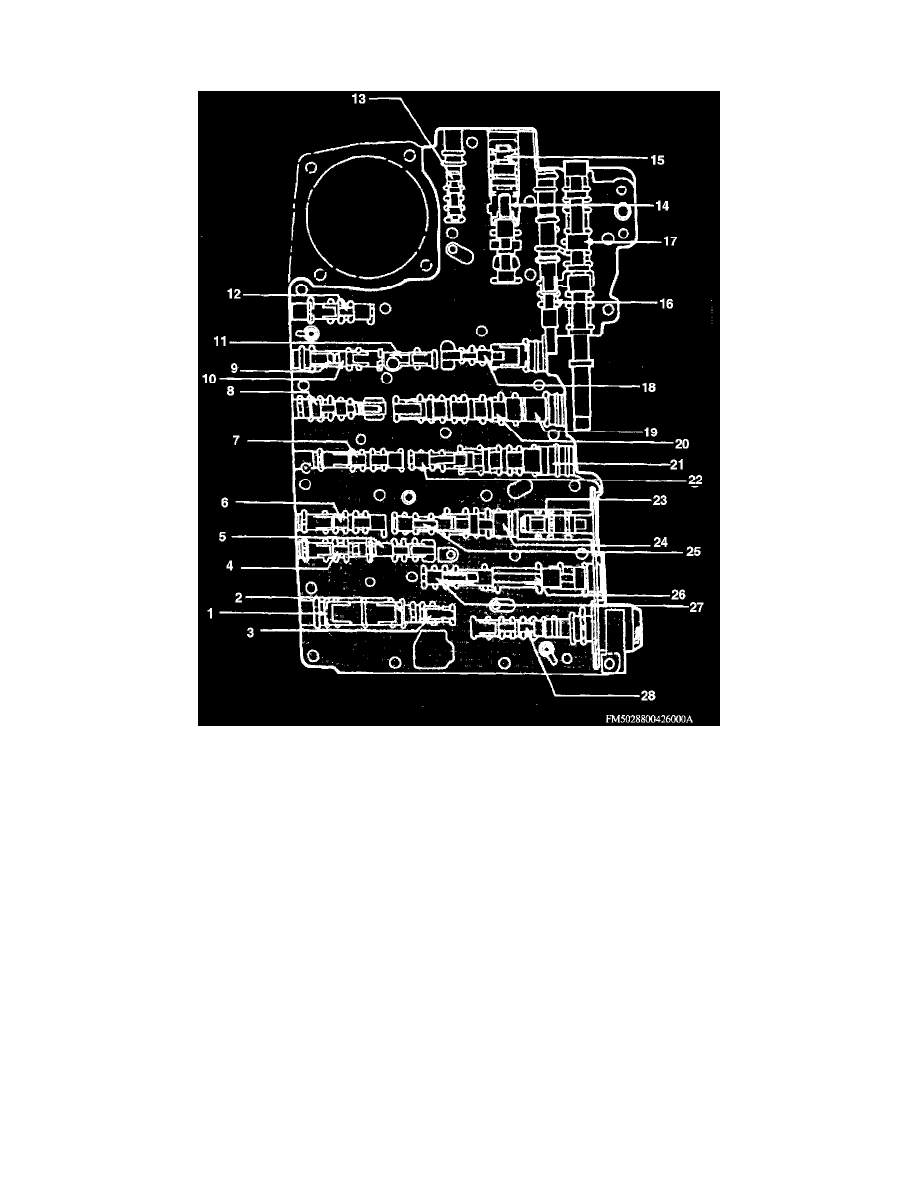Aerostar 2WD V6-182 3.0L (1995)

Valve Body: Description and Operation
VALVE BODY CONTROL FUNCTIONS
Valve Body Main Control Component Identification
NOTE: The numbers in parenthesis correspond with the numbers in the Valve Body Main Control Component Identification image.
(1) The intermediate servo accumulator controls band capacity on 1-2 shift.
(2) The overdrive servo accumulator controls overdrive band capacity on 3-4 upshifts.
(3) The 3-4 back-out valve controls the rate at which overdrive servo release oil exhausts on 3-4 back-out shifts.
(4) The 3-2 high clutch release valve controls the rate at which high clutch oil exhausts on higher speed 3-2 downshifts.
(5) The 3-2 intermediate servo release valve controls the rate at which intermediate servo release oil exhausts on higher speed 3-2 downshifts.
(6) The 3-2 kickdown timing valve sends intermediate servo release and high clutch oil to the torque demand valve during 3-2 downshifts at lower
speeds. At higher speed, this valve moves down and intermediate servo release and high clutch oil drains through the 3-2 intermediate servo
release kickdown control and 3-2 high clutch kickdown control valves.
(7) The 3-2 coast control valve controls the rate at which intermediate servo release and high clutch oil exhaust on 3-2 coasting downshifts.
(8) The throttle pressure booster valve increases throttle pressure output for shift delay at lower engine manifold vacuum levels.
(9) The 1-2 transition valve, along with the 2-3 back-out valve, will prevent an intermediate to reverse band tie-up on a manual 1-2 shift.
(10) The 2-3 back-out valve prevents tie-up if driver backs off accelerator during 2-3 upshift.
(11) The engagement control valve feeds the forward clutch through a small orifice at low Throttle Valve (TV) pressures, or through a larger orifice at
higher TV pressures.
(12) The torque demand control valve controls the rate at which high clutch and intermediate servo release oil exhausts at lower speed 3-2 downshifts.
(13) The cut back valve reduces control pressure as road speed increases.
(14) The oil pressure regulator valve regulates main control pressure.
(15) The main oil pressure booster valve increases or decreases main control pressure in relation to throttle pressure, and provides higher line pressure
in reverse.
(16) The throttle downshift valve reroutes line pressure to override the normal automatic upshift schedule and provide forced downshifts.
